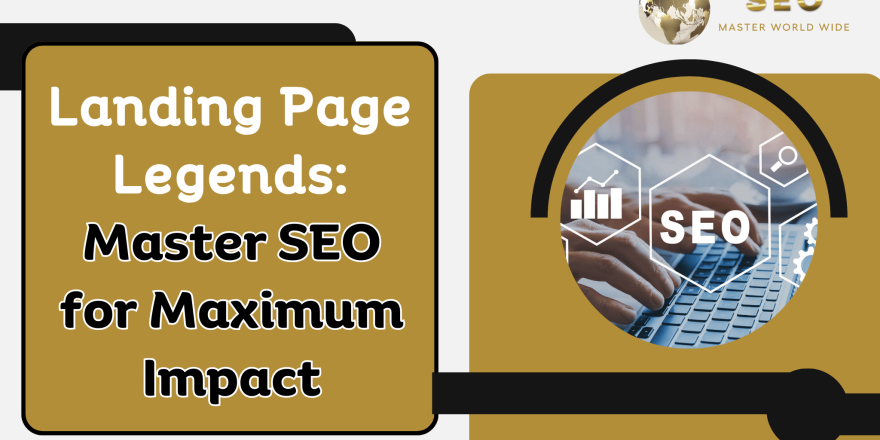SEO stands for search engine optimization. It is the process of making your website more visible and relevant for search engines and users. SEO helps your website rank higher on the search results pages, which can bring more organic traffic and conversions to your site.
But SEO is not a one-time thing. It needs constant monitoring and updating to keep up with the changing algorithms and user preferences of search engines. Here are some tips on how to make your website SEO-friendly in 2023:
Do keyword research
Keywords are the words and phrases that users type into the search box to find what they are looking for. Keyword research helps you find the most relevant and popular keywords for your niche, audience, and goals. You can use tools like Google Keyword Planner, SEMrush, or Ahrefs to find keyword ideas and analyze their search volume, competition, and intent. You should also look at the search results pages for your target keywords and see what kind of content and features are ranking well. This can help you understand the user intent and expectations behind each keyword.

Optimize your content
Content is the core of your website and SEO strategy. You should create high-quality, original, and engaging content that matches the user intent and provides value to your visitors. You should also optimize your content for your target keywords by using them naturally and strategically in your title tags, headings, meta descriptions, URLs, body text, images, and links. You should also use related keywords, synonyms, and variations to avoid keyword stuffing and increase your topical relevance. You should also update your content regularly to keep it fresh and relevant.
Title tags
Title tags are the HTML elements that define the title of each web page. They are displayed on the search results pages as the clickable headline for each result. They are also shown on the browser tabs and social media platforms when someone shares your page. Title tags are important for SEO as they tell search engines and users what your page is about. They also influence the click-through rate (CTR) of your page.
You should optimize your title tags for SEO by following these best practices:
- Include your target keyword at the beginning of the title tag
- Keep it concise and descriptive (50-60 characters)
- Use separators like hyphens or pipes to separate different elements
- Avoid duplicate or generic titles
- Add modifiers like numbers, dates, or adjectives to make it more appealing
Headings
Headings are the HTML elements that define the structure and hierarchy of your content. They are displayed as different levels of subheadings on your web page. They are important for SEO as they help search engines and users scan and understand your content better. They also make your content more readable and engaging.
You should optimize your headings for SEO by following these best practices:
- Use only one H1 tag per page as the main title of your content
- Use H2, H3, and other subheadings to break down your content into logical sections
- Include your target keyword or related keywords in some of your headings
- Use descriptive and catchy headings that capture the attention of your readers
- Avoid using too many or too few headings
Meta descriptions
Meta descriptions are the HTML elements that provide a brief summary of each web page. They are displayed on the search results pages below the title tag as a snippet of text. They are important for SEO as they influence the CTR of your page.
You should optimize your meta descriptions for SEO by following these best practices:
- Include your target keyword or a variation of it in the meta description
- Keep it relevant and compelling (150-160 characters)
- Use a call-to-action (CTA) to encourage users to click on your page
- Avoid duplicate or generic meta descriptions
- Add structured data markup to enhance your snippet with rich features like ratings, reviews, images, etc.
URLs
URLs are the addresses of each web page. They are displayed on the search results pages below the title tag as a green link. They are important for SEO as they help search engines and users identify and navigate to your page.
You should optimize your URLs for SEO by following these best practices:
- Include your target keyword or a variation of it in the URL
- Keep it short and simple (3-5 words)
- Use hyphens to separate words
- Avoid using stop words (like a, an, the, etc.), numbers, or symbols
- Use lowercase letters only
- Avoid using dynamic or complex URLs (like ?id=123 or /category/subcategory/page)
Body text
Body text is the main content of each web page. It is displayed as paragraphs of text on your web page. It is important for SEO as it provides information and value to your visitors. It also helps search engines understand what your page is about.
You should optimize your body text for SEO by following these best practices:
- Include your target keyword or related keywords naturally and strategically in your body text
- Write in a clear, concise, and engaging tone that matches your audience’s needs and expectations
- Use short sentences and paragraphs to improve readability
- Add bullet points, lists, tables, charts, etc. to make your content more scannable and visual
- Add internal links to other relevant pages on your website to provide more information and value to your visitors
- Add external links to authoritative sources to support your claims and increase credibility
- Avoid keyword stuffing, grammar errors, spelling mistakes, or plagiarism
- Use relevant and high-quality images that match your content and purpose
- Compress your images to reduce their file size and loading time
- Use descriptive and keyword-rich file names for your images
- Add alt text to your images to describe what they are and what they show
- Add title text to your images to provide additional information or context
- Add captions to your images to explain their relevance or significance
- Use responsive images that adapt to different screen sizes and devices
- Use descriptive and keyword-rich anchor text for your links
- Link to relevant and authoritative pages that provide value to your visitors
- Avoid linking to low-quality or spammy pages that can harm your reputation and rankings
- Avoid using too many or too few links on your page
- Avoid using broken or dead links that lead to error pages
- Use nofollow attribute for links that you don’t want search engines to follow or count (like paid links, comments, etc.)
- Use fonts that are clear, simple, and consistent
- Use font sizes that are large enough to read without zooming
- Use font colors that contrast well with the background
- Use colors that match your brand identity and theme
- Avoid using too many or too bright colors
- Use menus that are easy to access and use
- Use menus that have fewer options or categories
- Use menus that collapse or expand when needed
- Use forms that have fewer fields or steps
- Use forms that have clear labels and instructions
- Use forms that have autofill or autocomplete features
- Use relevant and high-quality images and videos that match your content and purpose
- Compress your images and videos to reduce their file size and loading time
- Use descriptive and keyword-rich file names, alt text, title text, captions, etc. for your images and videos
- Use responsive images and videos that adapt to different screen sizes and devices
- Add structured data markup to enhance your images and videos with rich features like ratings, reviews, thumbnails, etc.
Build backlinks
Backlinks are links from other websites that point to your website. They are one of the most important ranking factors for SEO as they indicate the authority, credibility, and popularity of your website. Search engines consider backlinks as votes of confidence from other sites that vouch for your content quality
and relevance. You can use tools like Moz Link Explorer, Ahrefs Backlink Checker, or Majestic SEO to analyze your backlink profile and identify the opportunities and gaps. Some effective ways to build backlinks are:
Create valuable and shareable content
Content is the foundation of your backlink strategy. You should create valuable and shareable content that attracts and engages your audience. You should also create content that answers the questions, solves the problems, or fulfills the needs of your target audience. You should also create content that is original, informative, and entertaining. You should also create content that is in different formats, such as blog posts, infographics, videos, podcasts, etc.
Guest post on relevant and authoritative sites
Guest posting is the process of writing and publishing content on other websites that are relevant and authoritative in your niche. It is important for backlink building as it can help you reach a wider audience, establish your expertise, and build relationships with other site owners. You should guest post on relevant and authoritative sites by following these steps:
- Find potential guest posting opportunities by using tools like Google, Ahrefs, or BuzzSumo
- Pitch your guest post idea to the site owner by using a personalized and professional email
- Write your guest post according to the site’s guidelines and standards
- Include a bio and a link to your website at the end of your guest post
- Promote your guest post on social media and other platforms
- Follow up with the site owner and thank them for the opportunity
- Respond to the comments and feedback on your guest post
Reach out to influencers and bloggers in your niche
Influencers and bloggers are people who have a large and loyal following in your niche. They are important for backlink building as they can help you increase your exposure, credibility, and traffic. You should reach out to influencers and bloggers in your niche by following these steps:
- Find potential influencers and bloggers by using tools like Google, Ahrefs, or BuzzSumo
- Build a relationship with them by following them on social media, commenting on their posts, sharing their content, etc.
- Offer them something of value in exchange for a link to your website, such as a free product, a testimonial, a mention, etc.
- Follow up with them and thank them for their support
- Maintain the relationship by providing them with more value and feedback
Participate in online forums and communities
Online forums and communities are platforms where people gather to discuss topics of common interest. They are important for backlink building as they can help you showcase your knowledge, connect with your audience, and drive traffic to your website. You should participate in online forums and communities by following these steps:
- Find relevant online forums and communities by using tools like Google, Ahrefs, or Reddit
- Create an account and complete your profile with a link to your website
- Join the conversations and provide helpful answers, tips, or insights
- Add a link to your website when appropriate and relevant
- Avoid spamming or self-promoting excessively
- Follow the rules and etiquette of each forum or community
Leverage social media platforms
Social media platforms are websites or apps where people share content and interact with each other. They are important for backlink building as they can help you increase your visibility, engagement, and traffic. You should leverage social media platforms by following these steps:
- Create accounts on popular social media platforms like Facebook, Twitter, Instagram, LinkedIn, etc.
- Optimize your profiles with a link to your website
- Create and share valuable content that resonates with your audience
- Add links to your website when appropriate and relevant
- Encourage your followers to like, comment, share, or click on your content
This blog post provides some tips on how to make your website SEO-friendly in 2023. It covers the topics of keyword research, content optimization, site speed, mobile optimization, and backlink building. It also gives some best practices and examples for each topic. The goal of this blog post is to help you improve your website’s visibility and relevance for search engines and users.





